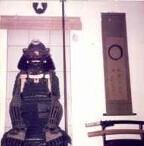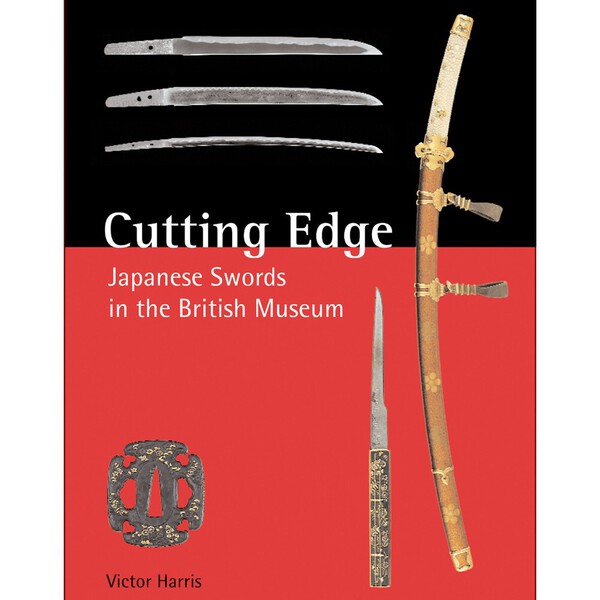-
Posts
930 -
Joined
-
Last visited
-
Days Won
8
Everything posted by The Blacksmith
-

Veritasium posted a video about nihonto
The Blacksmith replied to francois2605's topic in General Nihonto Related Discussion
Apart from the $105.000.000, he also shows a couple of nice Chinese katana! Oh, and how many times does one need to fold the metal to get over a billion layers I wonder. I cannot be bothered to work that out, so I'll stick with 32.768 layers and folded fifteen times. What I do know, is that anywhere near than much heating, ie. being folded and re welded 30 plus times, will totally destroy the steel. -

Suishinshi Masahide made in 1806 WW2 samurai sword info
The Blacksmith replied to a topic in Nihonto
The thread should stay I think. Hopefully, should any other people new to collecting and studying nihonto read this, they will realise that the observations and opinions are well meant and intended to be helpful and constructive, and are based on knowledge gathered over many years from various sources, and are not intended to be critical for the sake of it. This is educational, and thus I think it should stay. -

Suishinshi Masahide made in 1806 WW2 samurai sword info
The Blacksmith replied to a topic in Nihonto
Possibly added to hide fukure perhaps? -

Suishinshi Masahide made in 1806 WW2 samurai sword info
The Blacksmith replied to a topic in Nihonto
The most beautiful blade that I have ever owned was gimei, a supposed Tsuda Echizen no Kami Sukehiro. It obviously wasn't a Sukehiro, but I couldn't have liked the blade any more if it had been shoshin ! It was still an extremely high quality blade, ex Bowden collection. Hopefully, Matt will realise that the collective opinions represented here are the result of a love of these weapons over many years, and accumulated knowledge of them, and are not merely an attempt to discredit his blade. It would be wonderful if the blade, when shown in-hand to an expert, proved to be genuine, but the facts, based on the little that we have seen so far, seem to indicate otherwise. All the opinions were well meant! -

Suishinshi Masahide made in 1806 WW2 samurai sword info
The Blacksmith replied to a topic in Nihonto
The marks on the habaki are, as mentioned by John, certainly vise marks, made by the unprotected jaws of a vise. Possibly, someone has had it in a vise and perhaps hammered the tsuba to free the tsuka at some point. -

Suishinshi Masahide made in 1806 WW2 samurai sword info
The Blacksmith replied to a topic in Nihonto
it is not a fake sword, just the signature was often faked to get a better price from unsuspection buyers. As has been said Masahide was a rather famous and important smith, so his signature was often faked, and this is called gimei. It may still be an extremely nice blade! -
Two possibilities that perhaps spring to mind are Kaneryu or Kanemata, perhaps unlikely, but a possibility. Sorry that I cannot post the kanji. Russ
-

Opinions on new Wakazashi
The Blacksmith replied to tschnare's topic in General Nihonto Related Discussion
The mei is just Bungo ju Yukinaga. -
A book that I can highly recommend is Cutting Edge, by Victor Harris. The Book deals with 99 blades from the collection of the British Museum, from the Kamakura period to the Meiji era. Apart from giving details of some absolutely beautiful blades, Victor was regarded as a leading authority on the Japanese sword, and in addition, he was also an engineer, so has a very easy way of describing the various techniques, features and traits of the blade. Not as indepth as the Connoisseur's book of Japanese Swords, but easy to read and extremely interesting and informative. Highly recommended. Cutting Edge
-

Crap, I won! How did I do? Kake
The Blacksmith replied to Scogg's topic in Auctions and Online Sales or Sellers
Quite agree with Colin, that it would be best to disassemble the kake and sand it right down. Simply re laquering it will probablt have the flower designs show through, which would look even worse. The designs look decidedly European anyway, so no great loss, IMHO. No offence meant Sam! It would look stunning black with the mon in the centre. -

Crap, I won! How did I do? Kake
The Blacksmith replied to Scogg's topic in Auctions and Online Sales or Sellers
If you decide to go for a colour change, then to finish I would suggest Rustins Plastic Coating. When done carefully it gives an amazing laquer like finish. It is especially good on black. A two part product, that when hardened can be polished and gives a very realistic laquer finish. -
Apologies for being off topic to start, but......... A friend of mine who is a teacher in a London college, was giving one of his pupils a hard time for continuously getting something wrong. The student replied, "Well, at least I can spell my name right!". Brian looked at the board, and yes, he had spellt his own name wrong, and written Brain instead of Brian! Meanwhile, back on topic........... That is quite some mei, and such an interesting one too! Years ago, when I was collecting nihonto, both Basil Robinson and Victor Harris encouraged me to learn to read kanji. As Victor said, it is not that difficult (meaning mei as opposed to books), but you have got to want to do it. It was good advice, but that was forty odd years ago, and I have forgotten much of it since then, so am busy trying to regain that knowledge. A book that I found most helpful was Alfred Dobrée's Japanese Sword Blades, and I would spend time writing out the kanji and learning them. It was great fun, very rewarding, and time well spent! And as Brian has evidently said, It is well worth the effort!
-
Michael, Simply judging by the photos that you have supplied, the sword appears to be a reasonably nice example of WWII officers sword. This should fit nicely into your existing collection of WWII militaria, that is if the blade is not totally ruined. Unfortunately, they have often suffered damage at the hands of unknowing folks to whom it is simply an old sword. Sad, but true. Hopefully, you will be able to get pictures of the blade posted. As it is, if it is just as a representative example of a WWII Japanese officers sword for your militaria collection, you seem to have done quite nicely, the fittings look good and are in quite nice condition. And, who knows, maybe the blade is a good one, or even an ancient one! I'd be happy with it as an example in my collection, if the blade is reasonable.
-
I think that it is Eisho second year, 1505. But certainly don't take my word for it, I could well be wrong.........
-
Thank you Bruce. Sukesada would be my first choice, and I have had a couple of Sukesada blades, but the last character is not clear enough for my poor kanji !
-
Bishu Osafune Suke ? The last character looks to me like it is probably Mune ? Bishu Osafune Sukemune?? Or a slightly oddly written Sada? The above said, my kanji is at best very rusty!
-
I cannot answer for Bruce's sword of course, but the sword that I referred to earlier, they were two separate pieces that simply sat in the says. In the case of the saya mentioned here, it was an aluminium Shin-Gunto saya. The blade slid in effortlessly, and without any sound at all.
-
There are two wooden liners in the military metal saya. I had a beautiful and rather unusual Shin-Gunto katana, and when I took the liners out they were absolutely covered in kanji. Unfortunately I never got round to translating them, somethinbg that I deeply regret.
-
Then you got a good deal!
-
That is possibly the poorest fake that I have so far seen! I do hope that it isn't yours Dido, unless you are collecting them, which can in itself be an interesting hobby. I looked at one this afternoon, which I have been waiting to see for a couple of months. Alas, it was an obvious Chinese fake! Bo hi was wrong, the saya was wrong as was the retaining spring and the kissaki. A rather disappointing day all told!
-
I had wondered about the last character being Hiro, but thought more probably Shige. Quite possibly I am wrong though, my kanji is at best rusty!
-
Fujiwara Kunishige. The shape of the nakago (tang) looks Bizen to me?
-

Getting started as a new collector- seeking advice
The Blacksmith replied to Cygnus's topic in Nihonto
Nobody has so far mentioned Gendaito and Shin-Gunto, which surprises me. There are some really nice blades, sometimes even old ones available in a WWII mounting. Some of these mountings are in themselves extremely interesting. The blades found in these, like the wine analogy, vary enormously. It would be quite easy to find a really nice sword in this catagory at a very reasonable price, that would give you the basis for further study and appreciation. Also, there is the question of care and maintenance, do you know how to look after a Japanese blade etc, what to do, and more importantly, what not to do. Owning a really nice old blade gives us a tremendous responsibility to look after and mainatin it for the next generation, something that of course as a collector you will already know Grant, so my apologies if this sounds like I am preaching, it isn't meant like that, but this is something that is sometimes overlooked, especially by beginner collectors. I have had absolutely beautiful mounted swords, and to be honest, owning and caring for them sort of scared me, which perhaps explains part of my own later fascination with Shin-Gunto. The thought of a WWII sword but perhaps even with a blade that is several hundred years old, is in itself fascinationg ( my oldest was Nambokucho !), but there are many blades in these mounts, not necessarily that old, that will tick all the boxes, or at least some of them, and spur you on as a collector and inspire your further study of this vast, but fascinating subject. I hope that you make it to one of the big shows in the US, I am envious of this possibility I must admit, and perhaps you might even be able to meet up with one or two of the members here who can help to make the visit a little more interesting and informative. Happy hunting Grant.







